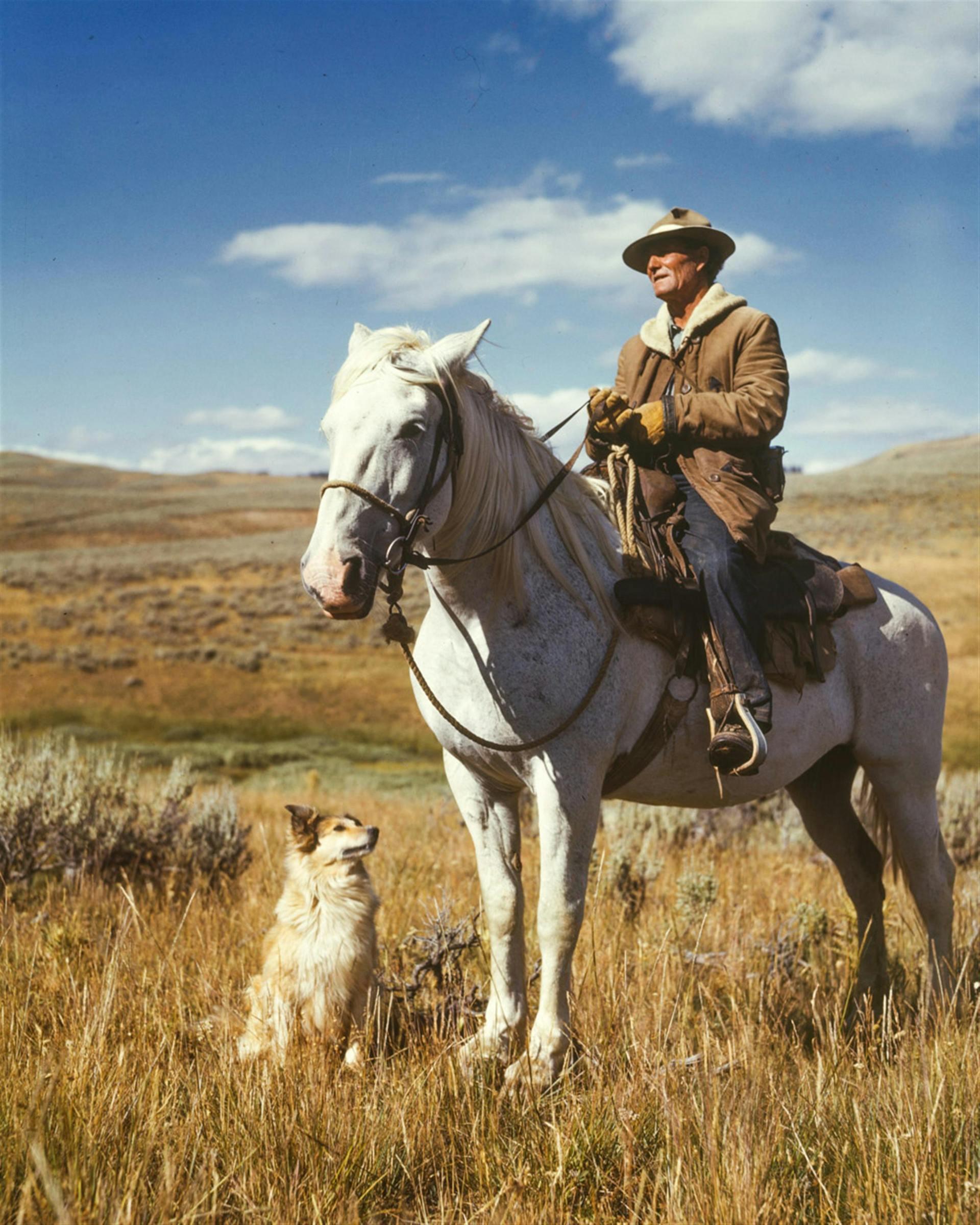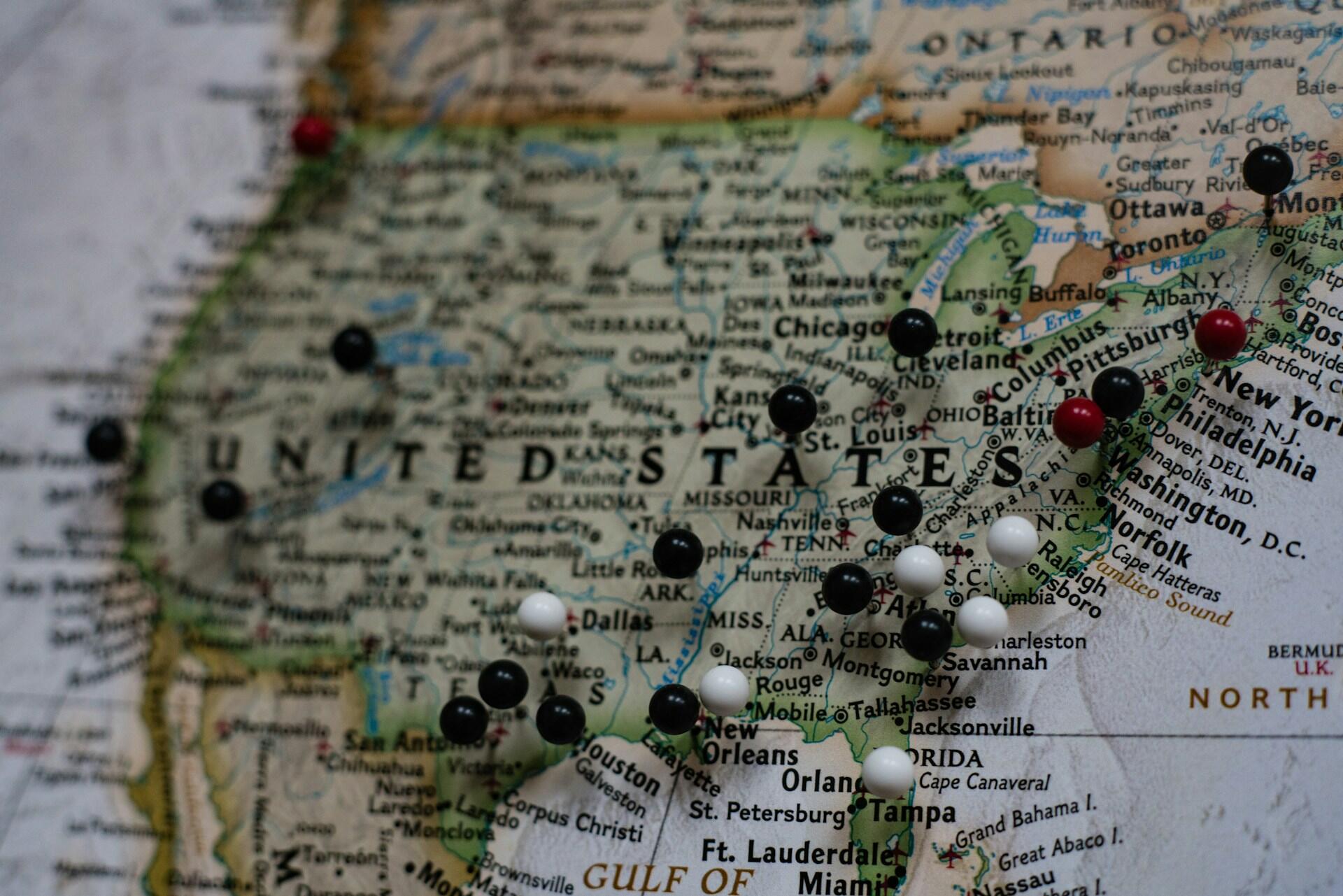The US is an enormous country: many states in the USA easily surpass many other countries in physical size as well as population. So, it makes sense that across the nation, you’ll find dozens (if not hundreds) of different accents! Many ESOL learners are taught with the General American Accent since it’s the easiest to understand, no matter where you are in America. But if you’re visiting or moving to the US, or are even just interested in media with regional pronunciations in them, learning the basic regional accents is a good idea.

America’s Linguistic Background
America’s history began with English settlers at Roanoke in the 1580s. In 1607, Virginia became an official colony, and by 1732, the original Thirteen Colonies were established. Most colonies were British, but notable influences included the Dutch in New York (originally New Amsterdam) and the Swedes in Delaware and Pennsylvania. The East Coast, being the oldest region, developed distinct regional dialects due to its initial isolation.
The Thirteen Colonies in the US were the first major settlements by the English in the New World. The states are: Connecticut, Delaware, Georgia, Maryland, Massachusetts, New Hampshire, New Jersey, New York, North Carolina, Pennsylvania, Rhode Island, South Carolina, and Virginia.
In the late 18th century, settlers moved westward into the Appalachian region.
The Louisiana Purchase in the early 19th century further spurred westward expansion, culminating in the Gold Rush and Manifest Destiny, which brought significant European immigration.
The largest groups included British, German, Irish, and Italian immigrants arriving primarily at New York City, along with Polish, Russian, and Greek populations. A notable influx of Chinese and Japanese immigrants also occurred on the West Coast during this period.
Additionally, other European powers, such as Spain and France, had claims on various regions, including Florida and the Louisiana Purchase.
Since the 1800s, the U.S. has seen a substantial influx of immigrants, contributing to its linguistic diversity. The influences of Native American and African slave populations were also critical in shaping American dialects.
Ultimately, America has become a melting pot of languages and cultures, leading to unique regional variations in English.
Midwest Accent
Why start with the Midwest accent? Well, the mild forms of this American articulation are what the “General American Accent” (GAA) is based upon. This is the representation you’ll hear most newscasters use on TV, as well as characters in movies and television with "neutral" pronunciations.
It’s the easiest version of American English for most listeners to understand.
The General American English Accent is found all over the US, not just the Midwest.
The strong Midwestern intonations have been heavily influenced by Scandinavian and German immigrants since the mid-19th century, when these cultural groups moved en masse to the areas in search of prosperity.

Defining Features of the Midwest Accent
As with any accent, it may sound different depending on where a person is from. These differences can vary by neighborhood in some places, so you must always take generalities like these with a few grains of salt.
That said, these are the characteristics most associated with the Midwestern pronunciation:
Speakers clearly pronounce their R’s both within and at the end of words.
"R" phonemes can be added in between words and syllables that would otherwise seem clunky without a consonant.
You’ll hear this concept discussed a lot when talking about American dialects. This means that the accent in question pronounces different vowel sounds in the same way, whereas a different articulation would have a distinction. In this example, “cot” and “caught” sound the same.
This means that phonemes, especially the “a” and “o” phonemes, become drawn out and changed. For instance, “bag” sounds like “bayg” and “snow” sounds like “snoh.”
Variations of the Midwest Accent
The main qualities of the articulation make up what you could call the general Midwest accent, but there are lots of versions of the intonation to be found. It’s not a precise science, but in general, there are 4 main Midwestern ways of speaking
- Midland American English
- Inland Northern American English
- North Central American English
- Yooper Dialect
Boston Accent
Like New York City, Boston is a historic port city. It had a strong connection to the British before the American Revolution, so most of the settlers living there from the early colonial days to the late 18th century had contemporary British accents. After independence, the articulation was allowed to evolve without as much input from the English until Europeans started emigrating to the New World.
Lots of Irish immigrants found their way into the city during the Great Famine in the 1840s, though there were plenty of migrants before and after that event as well. You’ll find Boston is proud of its Irish history, and pockets of the city (especially South Boston, aka Southie) have heavier accents due to them being historic Irish neighborhoods.
There was also a lot of Italian in the mix, but not as much as in NYC.

Defining Features of the Boston Accent
The Boston accent is fairly well-known around the world. Many famous people are from the area, and many famous movies have been set in the scenic city, such as “Good Will Hunting.” While not every actor portraying a Bostonian has done the best job by native Bostonians’ standards, actors usually portray the articulation well enough to get the point across to non-native speakers.
For many speakers with the accent, the “r” phoneme is only used in certain circumstances, when dropping the “r” would interrupt the flow of speech or make a word unrecognizable.
"T" and "th" phonemes are usually changed into “d” phonemes. So, “what about going to the dentist?” sounds like “whaddabou’ goin’ da the den’ist?”
Like the Midwestern articulation, you’ll find that words like “hot” and “thought” rhyme, even though they use different vowels.
The "a" and "o" phonemes are usually drawn out and made harsher, rather than softer.

Southern Accent
The Southern accent is another world-famous illustration of the range of speech types found in the US. The history of the genre of articulations we call “Southern” is long, storied, and complicated. It starts with the original settlers. The British among them would have had similar accents to those who were settling in the north. But, there were also Spanish colonists hoping to create a new country in the areas now known as Florida, Georgia, Louisiana, Mississippi, Alabama, Texas, Arizona, New Mexico, and even more.

Over time, the Spanish lost control of these territories to the newly formed US, but the Spanish influence remained in places like Texas. In the southeastern states, new dialects were born when the affluent began changing their pronunciation to align with the British elite.
Other major influences include Ulster-Scots and Irish immigrants, and African dialects from freed slaves post-emancipation.
In the mountains, small populations were cloistered away from outside influences for so long, their language took on a life of its own, creating various dialects. On the coast, other small groups created their own dialects.
Defining Features of the Southern Accent
It’s hard to classify an “average” Southern pronunciation because they’re all so different. So, we will talk about some of the most notable characteristics found in different regional pronunciations.
Most Southern accents today feature an “r” pronunciation. Depending on the dialect, it can present as more of a drawl or a twang. The non-rhotic "Magnolia Drawl" is a historical articulation that has been declining rapidly in recent years, and you're unlikely to hear this particular dialect.
In many Southern dialects, you’ll notice speakers turning monosyllabic vowel phonemes into disyllables. For example, “store” might sound like “stow-er.” The “pure” phoneme of the vowel is changed into a sound with two distinct parts.
Many Southerners will pronounce these two words and others like them the same way. In this instance, they both might sound more like “pein.” It typically changes the vowel phoneme before an “m” or “n,” so words like “gem” and “gym” can also sound alike.
Similar Accents to the Southern Accent
As mentioned before, there are multitudes of accents encapsulated within the category of Southern. They vary wildly, with some being more similar than others. Just to name a few, here are some other Southern articulations to be aware of:
- Appalachian
- Coastal/Lowland
- Charleston
- Gullah
- Mississippi Delta
- New Orleans
- Piedmont
Cajun Accent
Though located in the South, the Cajun articulation is in its own league and is not considered part of the “Southern accent family.”
The articulation (which is also part of a dialect and creole) began as a result of French, Spanish, English, African, and Caribbean languages mixing together.
Louisiana was once claimed by the Spanish, then by the French.
During the French and Indian War, many French Canadians were forced to leave the areas of Quebec, Nova Scotia, New Brunswick, Prince Edward Island, and Northern Maine.
They migrated to the coast of Louisiana, since its French influence made it a more welcoming place.

These French Canadians were known as “Acadian,” which was later shortened to “Cadian,” and then “Cajun.”
Defining Features of the Cajun Accent
A truly unique intonation in the US, the Cajun accent has a lot of characteristics that set it apart and may make it harder for outsiders to understand. Here are the biggest clues to keep in mind when deciphering Cajun pronunciation.
Without getting too technical, there are a few iterations of the Cajun accent (Cajun English, Cajun French, and Creole). All of them will have the speaker using French as part of their regular vocabulary.
In many variations of this dialect, you’ll find an abundance of “t” and “th” phonemes being left out of words. So, in the video below, you can hear that “they’ve got a big ol’ selection right here” sounds like “they godda big ol’ selection righ’here.”
Cajun is a very unique articulation compared to any other US accent. It sounds at times Southern, Irish, Spanish/Mexican Spanish, and Caribbean, with a dash of African American English as well.
African American English (AAE) Dialects and Accents
This subject is highly complex, and it is far too much to get into detail in this simple article.
What you need to know about these dialects is this: enslaved people in the pre-emancipation era came from many different linguistic backgrounds, since they came from different parts of Africa. On their plantations, they needed to learn English without any formal education.
The mixture of different African intonations plus the (likely non-standard) accents of the slaveholders created unique pronunciations.
As time went on, pockets of AAE developed in different areas. After emancipation, over generations, many Black folks have learned to speak in at least two different dialects: AAE and the “acceptable” accent in their location. This is because even after all these years, there is unfortunately still a huge stigma around Black folks not adhering to "white" standards.
Today, AAE accents can be found in different varieties across all the states.
Different AAE Dialects
We won’t go into detail about these different dialects in this article, but being aware of them is a good idea for cultural reasons. There are several recognized AAE accents and dialects, with likely many more unrecognized ones. Here are the most common:
- African American Vernacular English (AAVE)
- African American Standard English
- African American Appalachian English
- Older African American English
- Gullah
Another important aspect to note is that in many cities, you can find an accent used by people of all backgrounds (not just Black people) that is heavily influenced by AAVE. It’s not used by every person in the city, but it’s also a defining feature of the area. A good model of this is the Atlanta accent.
Defining Features of AAE
Like the Southern and Midwestern articulations, the AAE accent is very broad, so it’s impossible to make a list that covers all the characteristics of each accent in a simple way. But, here are some things to listen for so you might recognize how to understand an AAE speaker.
A common occurrence in AAE is the practice of copula deletion. This means that the verb “to be” is often omitted from sentences. For instance, “He is a hard worker” can become “He a hard worker.”
Some AAE dialects will drop modifiers like the possessive “s,” the plural “s,” and the contractive “s.” Take this example: “Mark’s dogs think grass’s (grass is) tasty.” Dropping all the “s” modifiers, the sentence becomes “Mark dog think grass tasty.”
In many variations, the “th” phoneme is altered or dropped depending on its place in a word or sentence. “L” phonemes can also be changed to be smoothed into another sound or omitted altogether. Certain vowel phonemes, like “oi,” are often smoothed together as well. Finally, consonant clusters may be reversed, for instance, “ask” becomes “axe.”
From Coast to coast, there are many different accents in America. Being able to identify the main features of the major accents can help you understand different speakers better and have an understanding of their background, which helps with interpersonal connections.
References
- African American English Articulation Differences and Language Characteristics. (2021). In bilinguistics.com. https://bilinguistics.com/african-american-english-articulation-differences-and-language-characteristics
- Bland-Stewart, L. M. (2005). Difference or Deficit in Speakers of African American English? In The ASHA Leader (Vol. 10, Issue 6, pp. 6–31). American Speech Language Hearing Association. https://doi.org/10.1044/leader.ftr1.10062005.6
- Immigration to the United States, 1851-1900. (n.d.). In Library of Congress. https://www.loc.gov/classroom-materials/united-states-history-primary-source-timeline/rise-of-industrial-america-1876-1900/immigration-to-united-states-1851-1900/
























